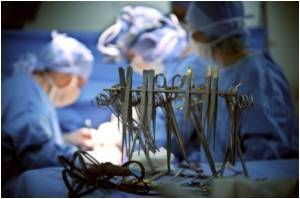Congenital Insensitivity is caused by a rare genetic mutation that results in a lack of ion channels that transport sodium across sensory nerves.

‘Mutations in SCN9A gene causes congenital insensitivity by producing opioid proteins in higher amounts. A drug called naloxone reduces these opioids and brings back sensitivity in people suffering with this disorder.
’





The Nav1.7 channel is responsible for transporting pain signals in both humans and mice. Researchers analyzed transgenic mice or knockout mice, mice devoid of this SCN9A gene. They found that these mice that lacked the gene produced opioid proteins in higher amounts which in turn suppressed their ability to feel pain.Therefore, they induced an opioid blocker called Naloxone into the mice which reduced the production of opioid proteins in their body. The mice were able to feel pain due to the reduction of these proteins, which the researchers concerned as an effective treatment for people suffering with congenital insensitivity.
They also tried this drug naloxone on a 37-year-old woman suffering with this disorder. On treatment with this drug, the woman devoid of this SCN9A gene was able to feel the pain again. But the treatment imposes some side effects and may not be considered as an effective treatment for congenital insensitivity.
”Opioids and Nav1.7 blockers could provide much stronger analgesics, but they will not necessarily be better for patients. If we take the combination therapy route, people would have to take opioids throughout the lifetime, which is not a welcome thing,” said John Wood of University College London.
Reference: Minett, M. S. et al. Endogenous opioids contribute to insensitivity to pain in humans and mice lacking sodium channel Nav1.7. Nat. Commun. 6:8967 doi: 10.1038/ncomms9967 (2015).
Advertisement














